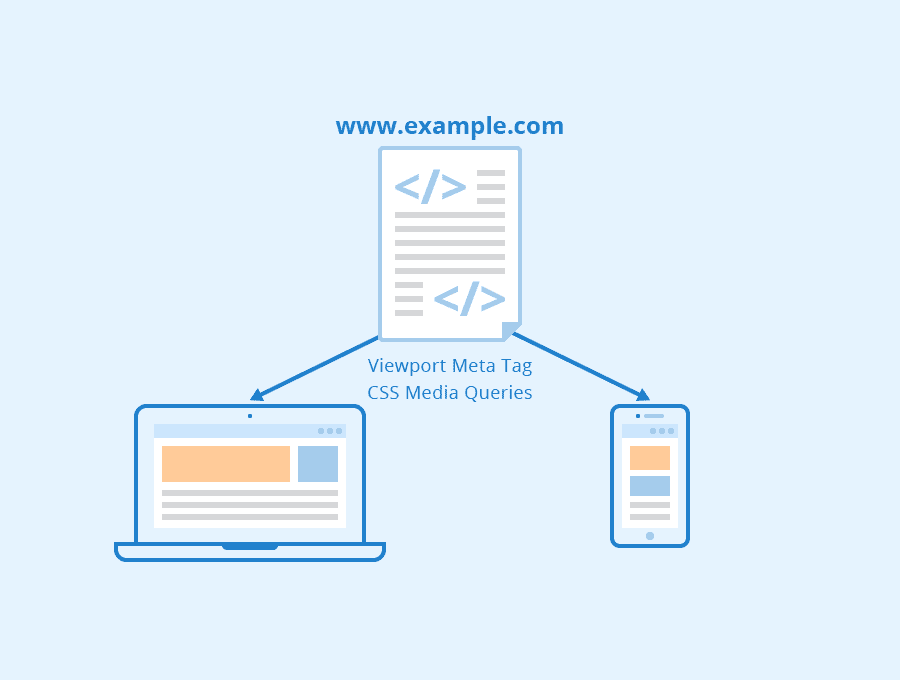Having an effective online presence is important in order to achieve online success. A well-designed website is no longer just a luxury; it is a necessity. One key aspect of web design that has gained immense significance is responsive design. Responsive web design ensures that a website adapts and functions flawlessly across various devices and screen sizes.
Let’s find out how responsive web design can help businesses convert more leads and boost sales.
Enhanced User Experience
Responsive web design plays a pivotal role in providing users with an exceptional browsing experience, regardless of the device they use. When a website is responsive, it automatically adjusts its layout, content, and navigation to fit the specific screen size. This adaptability eliminates the need for users to zoom, scroll excessively, or struggle to find the desired information. This means that visitors are more likely to stay longer, engage with the content, and explore the products or services offered.
More importantly, a positive user experience fosters trust and credibility. Research shows that users are more inclined to interact with a brand that offers a seamless and user-friendly website. By considering responsive design principles, businesses can create a positive first impression, which increases the chances of converting visitors into leads and, ultimately, customers.
Search Engine Optimization
Responsive web design also impacts search engine optimization (SEO), because it enables businesses to maintain a single website with consistent content and URLs. Search engines, such as Google, prioritize responsive websites in their rankings because they provide a better user experience. When a website is responsive, it reduces bounce rates, improves dwell time, and enhances engagement metrics, all of which are essential factors for search engine algorithms.
Responsive design also eliminates the need for multiple versions of a website, such as separate mobile and desktop versions. This streamlines SEO efforts by consolidating link building, social sharing, and content development into a unified strategy. A responsive website also avoids the risk of duplicate content, which can negatively impact search rankings.
Improved Customer Engagement
Responsive web design promotes better customer engagement by catering to the diverse needs and preferences of users. When a website adapts to different devices, it ensures that visitors can easily access and interact with the content, regardless of whether they are using a smartphone, tablet, or desktop computer. This seamless experience encourages users to explore the website further, increasing the likelihood of conversions.
Responsive design enables businesses to implement effective call-to-action (CTA) strategies. By strategically placing CTAs that are easy to spot and interact with, businesses can guide users through the conversion funnel and boost sales. Whether it’s a subscription form, a purchase button, or a contact form, responsive design ensures that these elements are accessible and optimized for conversion on any device.
Adaptability to Evolving Technology

Responsive web design is not only beneficial for current devices and screen sizes but also ensures adaptability to emerging technologies. As technology continues to advance, new devices with varying screen sizes and resolutions are introduced to the market. By employing responsive design principles, businesses future-proof their websites, ensuring they remain functional and visually appealing on upcoming devices.
For example, the rise of wearable technology, such as smartwatches and augmented reality (AR) glasses, presents new opportunities for businesses to engage with their target audience. Responsive web design allows websites to seamlessly adapt to these devices, enabling users to access relevant information and make purchases conveniently. By staying ahead of the curve and embracing responsive design, businesses can establish themselves as forward-thinking and customer-centric, further enhancing their chances of capturing leads and driving sales.
Increased Mobile Usage and Sales
With the increasing dominance of mobile devices in the digital world, responsive web design has become even more critical for businesses. Mobile usage has surpassed desktop usage, and consumers are increasingly relying on their smartphones and tablets to research products, make purchases, and interact with brands.
A responsive website ensures that businesses can cater to this growing mobile audience effectively. By providing a seamless and optimized mobile experience, businesses can capture the attention of on-the-go users and provide them with a frictionless browsing and purchasing process. This mobile responsiveness not only enhances the user experience but also increases the chances of generating leads and driving sales.
Furthermore, responsive design allows for the implementation of mobile-specific features such as location-based services and click-to-call functionality. These features enable businesses to leverage mobile technology to their advantage, targeting users based on their geographical location and facilitating immediate communication. By capitalizing on the mobile-first approach facilitated by responsive web design, businesses can tap into the immense potential of the mobile market and achieve higher conversion rates.
Wrap-up
Responsive web design is an important factor when it comes to converting leads and boosting sales for businesses in the internet. By providing an enhanced user experience, responsive websites create positive impressions and establish credibility, leading to increased conversions.
Responsive design also positively impacts search engine optimization, as it improves engagement metrics and streamlines SEO efforts. The ability to engage customers effectively across various devices and provide seamless interactions allows businesses to drive sales and maximize their online potential.
In today’s competitive market, businesses cannot afford to overlook the importance of responsive web design. Embracing this design philosophy empowers businesses to cater to their audience’s needs, increase visibility on search engines, and ultimately convert more leads into paying customers.
The post How Responsive Web Design Can Help You Convert More Leads and Boost Sales appeared first on Creativ Digital.
from Creativ Digital https://ift.tt/eURz3VM
No comments:
Post a Comment